Scandinavian aesthetics have a unique charm that is captivating the globe in a remarkable style sweep, particularly seen in the rise of Scandinavian Vanity. Right from its origins rooted in simplicity and functionality, to its sophisticated evolution marked by clean lines and understated elegance, this design movement has carved a niche in the worldwide design landscape. The blend of minimalism and practicality adds a fresh breath of air to modern furniture and interior styling, turning everyday living spaces into artful masterpieces. This exploration encompasses a deep dive into the heart of Scandinavian aesthetic, its global popularity, practical implementation, iconic representatives, and the green heart that beats within its stunning exterior.
Understanding Scandinavian Aesthetics
Origins of Scandinavian Design
Scandinavian design finds its roots in the early 20th century, arising from the five Nordic countries – Sweden, Norway, Denmark, Iceland and Finland. Its emergence was primarily influenced by the region’s harsh climates and the need for functional and easy-to-use designs. The idea that beautiful and functional everyday objects should not only be affordable to the wealthy, but to all, is a core theme in Scandinavian design.
Prominent Scandinavian Designers
Numerous designers have played crucial roles in the development of Scandinavian design. Alvar Aalto, a Finnish designer, had a significant impact with his work on furniture, textiles, and glass. His combination of simplicity, utility, and beauty became a hallmark of the Finnish design trends. Arne Jacobsen, a Danish architect and designer, made notable contributions with his functional yet stylish chairs, showcasing the perfect harmony between form and function – a quintessential trait of Scandinavian design.
Characteristics of Scandinavian Design
Scandinavian design is widely celebrated for its simplicity, minimalism, and functionality. This style places a heavy emphasis on using natural materials like wood, leather, and hemp. These materials not only underpin the nature-centric lifestyle of the Nordic people but also reflect a sense of warmth in the design.
The aesthetic of this design can be characterized by clean lines, and simple shapes that are visually pleasing yet very functional. Minimal ornamentation is a testament to the ‘less is more’ philosophy, allowing the beautiful, functional design to speak for itself.
Influence on Modern Furniture and Interior Design
Scandinavian design has significantly influenced modern furniture and interior design. Its minimal and functional approach appeals to contemporary tastes, leading to its widespread adoption in homes and offices worldwide. A major emphasis on light, especially natural light, due to the long and dark Nordic winters, has led designers to create pieces that reflect light, using a limited and neutral color palette, which typically includes shades of white, gray, brown, and black.
An Overview of Scandinavian Vanity Design
Essential to grasp in the realm of Scandinavian vanity, inclusive of furnishings such as tables, mirrors, and cabinets, are the foundational principles of simplicity, functionality, and minimalism. Each piece is typically characterized by clean lines, functional designs often incorporating hidden storage through drawers, and a neutral or lightly colored palette. These distinct elements amalgamate to create a balanced, elegant aesthetic, providing a captivating centerpiece to any room. Recently, designers have begun to incorporate the idea of ‘hygge’, a Danish concept that denotes a sense of comfort and coziness, into their Scandinavian vanity designs, amplifying their appeal and demand. This design philosophy underscores the complementarity, rather than exclusiveness, of form and function.
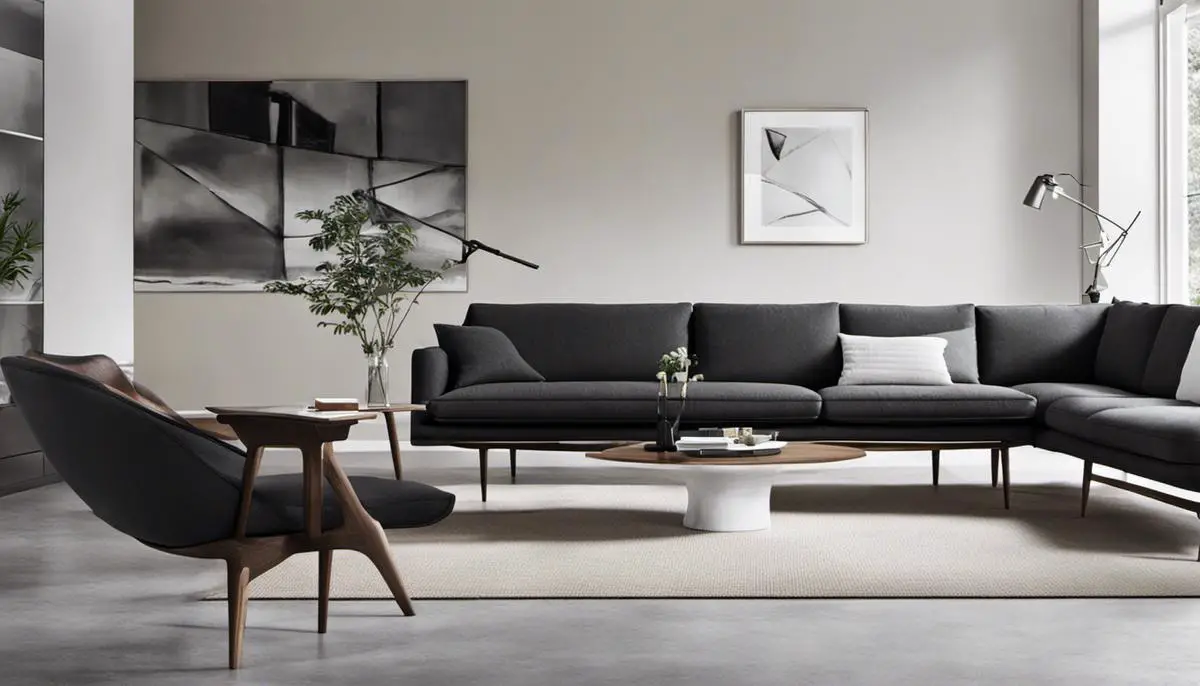
The Rise of Scandinavian Vanity in the Global Market
The Popularity Surge of Scandinavian Vanity
The sheer simplicity, monochromatic hues, and emphasis on practicality of Scandinavian vanity designs have fueled its popularity surge worldwide, particularly in the realm of home furnishings and design schemes. The recent trend shows an increased predilection towards products reflecting an amalgamation of aesthetics, simplicity, and functionality, a holistic representation of traditional Scandinavian design ideals.
Global Market Trends
Numerous factors have contributed to this rise in popularity, one of which is global market trends. With the continuous evolution in lifestyle and preferences among consumers, there’s been a noticeable shift towards minimalism. Scandinavian vanity fits perfectly into this paradigm. This design concept prioritizes a functional, clutter-free space without trading off aesthetics, responding directly to today’s high demand for efficient yet beautiful living environments.
Consumer Preferences
Consumer preferences play a vital role in the global market trends. The rising appreciation for simplicity, functionality, and beauty reflects a desire for balance and harmony, which Scandinavian vanity fulfills. Consumers increasingly seek pieces that not only serve a function but also elevate the aesthetics of their living spaces. There’s an ongoing demand for home accessories that promote tranquility and convey a sense of the beauty in simplicity, fostered by Scandinavian design.
Influence of Social Media
In addition, social media has played an instrumental role in popularizing Scandinavian vanity. Platforms like Instagram and Pinterest, abundant with tastefully curated homes and offices embodying Scandinavian principles, expose users to the charm and practicality of this design ethos. High-profile designers and influencers who champion this minimalist aesthetic contribute to its global appeal, making Scandinavian vanity a compelling choice for those seeking to revamp their homes or offices.
The Role of Globalization
Globalization also contributes significantly to the popularity of Scandinavian vanity. With an interconnected world, concepts and ideas from one part of the world can easily be adopted elsewhere. As Scandinavian vanity infiltrates markets worldwide, consumers are more exposed to its sensibility and charm. Scandinavian oriented e-commerce platforms have also made it easier for consumers all over the world to access Scandinavian style furniture and home decor, further contributing to its popularity.
Scandinavian Vanity in the Context of Contemporary Lifestyle
The principles of Scandinavian vanity seamlessly dovetail with the modern lifestyle’s focus on minimalism, practicality, and aesthetic appeal. The increasing tide of people keen on decluttering their dwellings and maximizing utility has amplified the resonance of Scandinavian design’s uncluttered beauty and function-focused ethos. Accordingly, Scandinavian vanity retains its prominent place in the global home and design landscape.
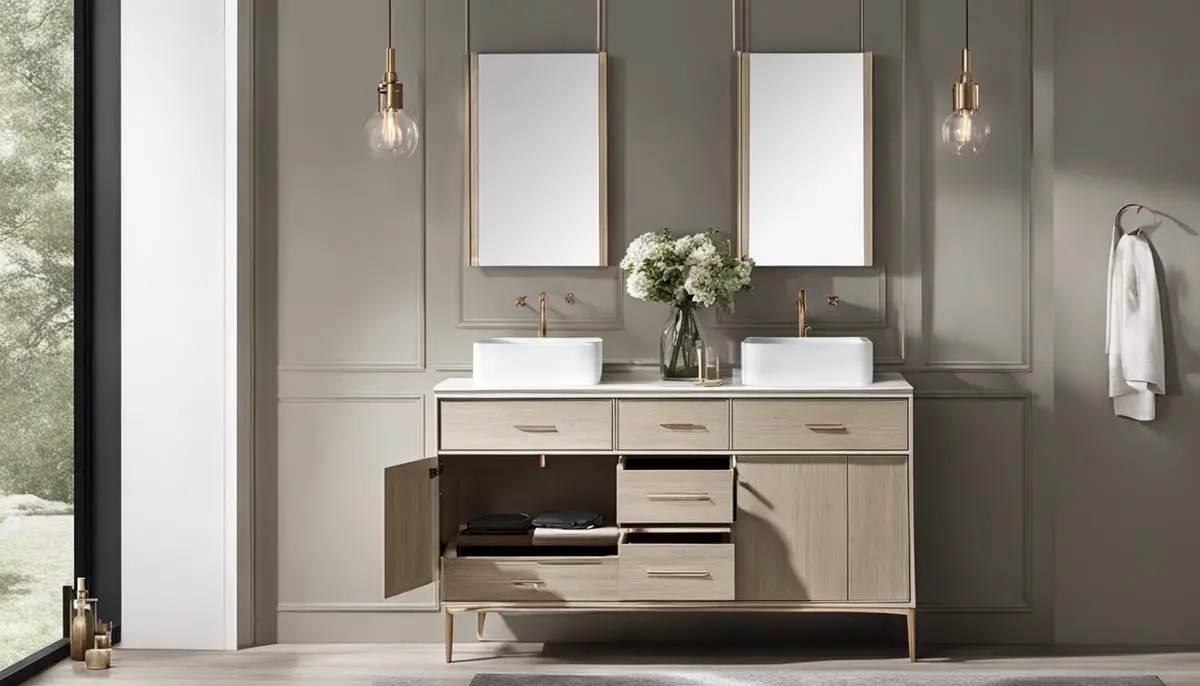
Scandinavian Vanity in Contemporary Home Styling
Delving into the Essence of Scandinavian Vanity
The term ‘Scandinavian vanity’ refers to a tastefully minimalistic and function-oriented furnishing that is typically situated in the sleeping and bathing quarters of Scandinavian homes. Embodying a wider set of Scandinavian design principles, these vanities exude elegance and terseness. Aside from offering storage capacity, they are harmoniously structured to provide a cozy nook for personal grooming activities.
Aesthetic Appeal
The aesthetic appeal of Scandinavian vanity has gained global recognition for its seamless blend of functionality and minimalistic elegance. Key tenets of this aesthetic include clean lines, natural textures, and a generally muted color palette. Simplicity takes precedence, as opposed to ornate or extraneous detailing. What sets it apart from other styles is the clever harnessing of light, natural elements, and uncluttered spaces to create a serene and pragmatic environment.
Selecting Your Scandinavian Vanity
When selecting a Scandinavian vanity, look for design pieces that embody the principle of minimalism without compromising on functionality. Typically, Scandinavian vanities are beautifully crafted from wood, often in lighter shades to mimic the natural light of Nordic countries. They often combine clever storage solutions with an appealing aesthetic. The presence of a well-placed mirror is another hallmark, providing both practicality and a sense of spaciousness.
Color Theme
The color palette of Scandinavian design leans towards understatement. Neutral colors such as whites, greys, and beiges are often favored as they echo the natural hues of Nordic landscapes, bringing a sense of calm and tranquility to the interior space. Nonetheless, splashes of brighter colors can be interspersed to add a little personality and drama to the mix.
Lighting and Accessories
Lighting plays a key role in Scandinavian design. Because of the geographical location of Scandinavian countries, which receive less sunlight year-round, indoor lighting is designed to enhance the sense of light and airiness. When it comes to accessories, less is more; think functional items that also serve as decorative pieces, such as a stylish chair, a cozy rug, or strategically placed indoor plants. These elements, when used sparingly, add warmth and depth without cluttering the space.
Incorporating Scandinavian Vanity into Your Home
Incorporating Scandinavian vanity into your home is not about replicating an exact look, but rather about adopting a philosophy – one that harmonizes functionality with simple, clear aesthetics. From your choice of vanity to the selection of surrounding accessories, the overarching theme should be guided by principles of simplicity, comfort, and closeness to nature. Remember: Scandinavian style is not austere; rather it aims to create a cozy yet functional space which finds beauty in simplicity.
Understanding Scandinavian Vanity
To comprehend the concept of Scandinavian vanity, it’s essential to note that it represents more than a style or a furniture piece. Instead, it embodies a lifestyle that puts sustainability, quality, and simplicity on a pedestal. It’s more than just interior decor; it’s an expression of deliberate living, prioritizing the essentials, and appreciating the inherent beauty that comes from functionality.
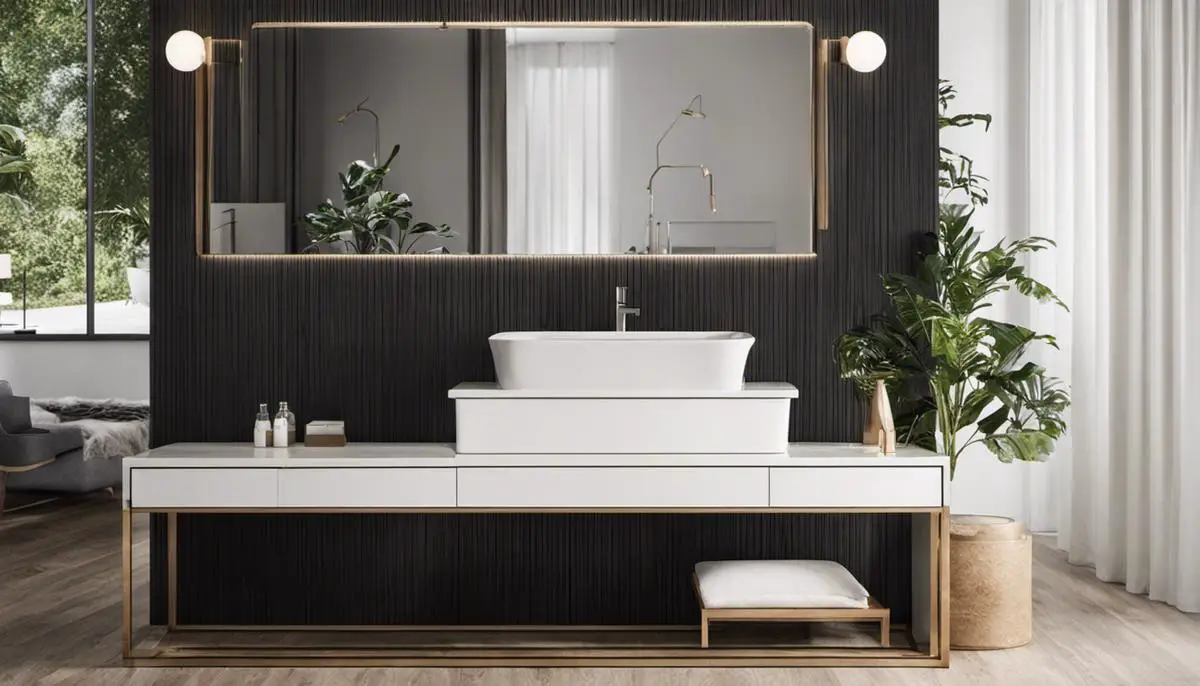
Iconic Scandinavian Vanity Pieces and Designers
A Glimpse into the Scandinavian Aesthetic
Tracing back to the 1950s Scandinavian design movement that emerged in Denmark, Norway, Sweden, Finland, and Iceland, Scandinavian vanity exemplifies a refined aesthetic welded with purpose. Accentuated by minimalistic simplicity and functional form, these vanity pieces have become a beloved aspect of interior design. This approach, deeply ingrained in the regional lifestyle and culture, maintains a careful balance between form and function, resulting in a refined, modern aesthetic that many aspire to incorporate into their living spaces.
Influential Designers and Their Iconic Pieces
Numerous designers have left their mark in the realm of Scandinavian vanity, shaping its image throughout the years. Arne Jacobsen, a Danish architect and designer, is one of the prominent figures that contributed notable works. His AJ Table Lamp, created in 1960, pioneered the blend of minimal design and functionality. With its angled head and round base, it infused a futuristic feel into the traditional table lamp.
Another influential designer was Alvar Aalto, a Finnish architect and designer. His Paimio Chair – a single wooden piece bending fluidly into a seated position – was a revolutionary design. Not only was it visually elegant, but it was also designed with the user’s comfort in mind, reflecting the true Scandinavian spirit of functionalism.
Verner Panton, a Danish designer, made a name for himself with his Panton Chair. Its S-shape, fashioned out of a single piece of plastic, epitomized the Scandinavian love for simple, user-friendly design. It remains a modernist icon till this day.
Historical and Cultural Influence
Scandinavian vanity came into existence post-WWII when the Scandinavian countries thrived economically. With an abundance of local raw materials like birch timber, and a desire to make their homes warm and inviting amidst a harsh, cold climate, the Scandinavian people naturally gravitated toward home interiors grounded in simplicity, quality, and practicality.
Their collective cultural value of Hygge, a Danish term for a state of coziness and comfortable wellbeing, reflected highly in the comfort and simplicity of their vanity pieces. Furthermore, the cultural principles of Lagom from Sweden and Kalsarikänni from Finland, emphasizing a balanced and content lifestyle, resonated in the streamlined, unpretentious designs of their furniture.
Craftsmanship and Techniques
Scandinavian vanity pieces are revered not just for their elegant design but also for their high-quality craftsmanship. Traditional techniques are passed from generation to generation, where human touch, heart, and expertise play a significant part in the making. Birch, pine, and spruce form the primary materials, adding a touch of authenticity and indigenous connection to the items.
The construction techniques used in Scandinavian vanity honor the raw materials, their features, and the environment. The solid wood construction technique, for instance, is ecologically friendly and results in robust, durable pieces.
In the world of design, Scandinavian vanity strikes a unique balance between simplicity, functionality, and quality craftsmanship. It represents more than just interior decoration; it is a way of life. This stems from the deep-rooted values of comfort and balance that are embodied in these iconic pieces which transform our living spaces.
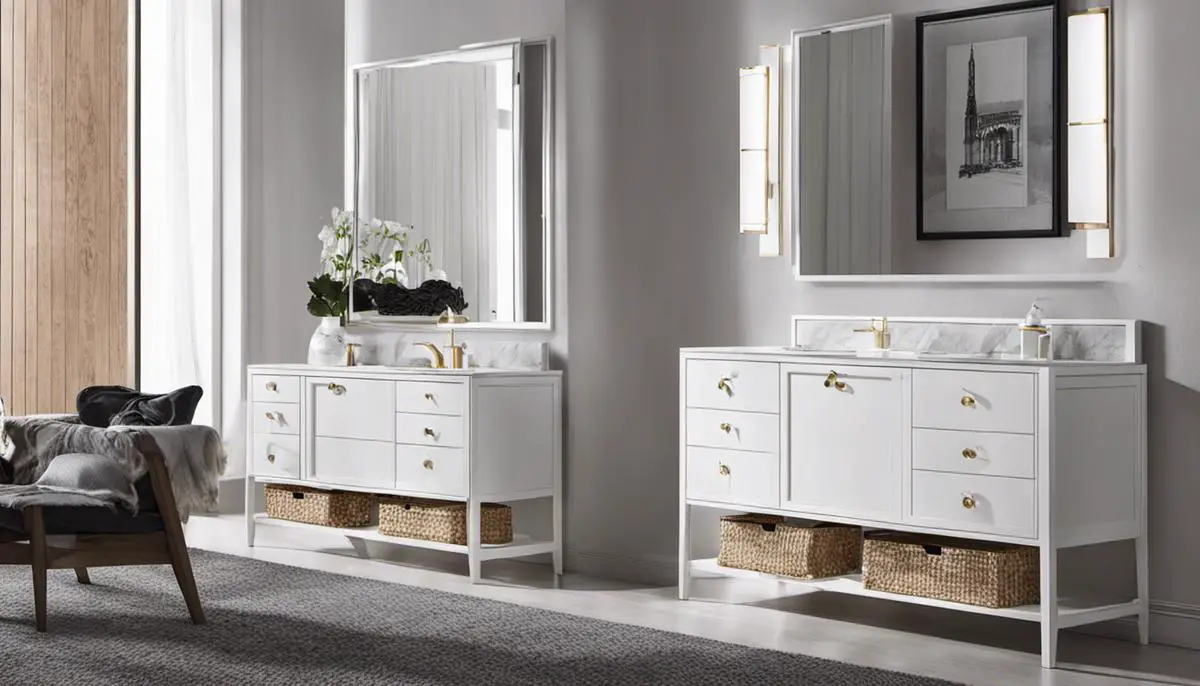
The Sustainability Factor in Scandinavian Vanity
The Role of Sustainable Materials in Scandinavian Vanity Design
Central to the ethos of Scandinavian vanity design is the use of sustainable, eco-friendly materials. These choices go beyond delivering the characteristic sleek, minimalist aesthetic. They demonstrate a commitment to sustainable living practices. Take, for instance, the widespread use of reclaimed wood in various vanity articles. This not only reduces deforestation and waste but also enhances the overall look and feel of the pieces. Renewable materials like bamboo and cork, admired for their low environmental impact and natural charm, are also frequently incorporated into Scandinavian vanity designs.
Ethical Manufacturing in Scandinavian Vanity
Apart from sustainable materials, Scandinavian vanity design takes into account ethical manufacturing processes. The Nordic countries are known for their stringent labor laws and focus on employee welfare. These societal values have inevitably trickled down to the manufacturing sector, including vanity design. As such, ethically-produced Scandinavian vanity items are not just enviable for their design, but also for the humane work practices that bring them to life.
Scandinavian Design’s Life Cycle Consideration
A key aspect of Scandinavian vanity that underscores its commitment to the environment is the attention paid to the product lifecycle. Nordic designers often aim for functionality and longevity in their creations, resulting in timeless pieces that defy fleeting fashion trends. Maintaining and repairing these items is encouraged over constant replacement – a practice that lowers waste generation and creates a cycle of reuse.
Combining Functionality and Aesthetics
The hallmark of Scandinavian vanity design lies in its ability to blend functionality with aesthetics while simultaneously fostering environmental responsibility. Minimalist design principles are applied to decrease material usage and waste, with each piece created to serve a specific, practical purpose. This marriage of form and function discourages excess and waste, promoting a healthier planet.
Influential Scandinavian Sustainability Laws
The sustainability imbibed in Scandinavian vanity design is not merely a matter of choice, but is heavily backed by Nordic laws that influence design principles. Laws on waste management, energy management, and emission reduction in Nordic countries compel designers to prioritize eco-friendly processes and materials in their design process.
Sustainability-Driven Consumer Demand in Scandinavia
The surge in sustainable Scandinavian vanity pieces is also driven by a strong consumer demand for eco-friendly products, fueled by a societal shift towards conscious consumerism. Buyers keen on decorating their spaces with Scandinavian vanity items are not just interested in aesthetics, but also in the environmental footprints of these products, which further entrenches sustainability in this design philosophy.
Concluding Thoughts
Scandinavian vanity design, with its strong focus on materials, manufacturing, and product life cycle, presents an effective and appealing way of incorporating sustainability into everyday life. Each piece, embodying the principles of minimalism, functionality, and ethical production, encapsulates not just the users’ style, but their environmental consciousness as well.
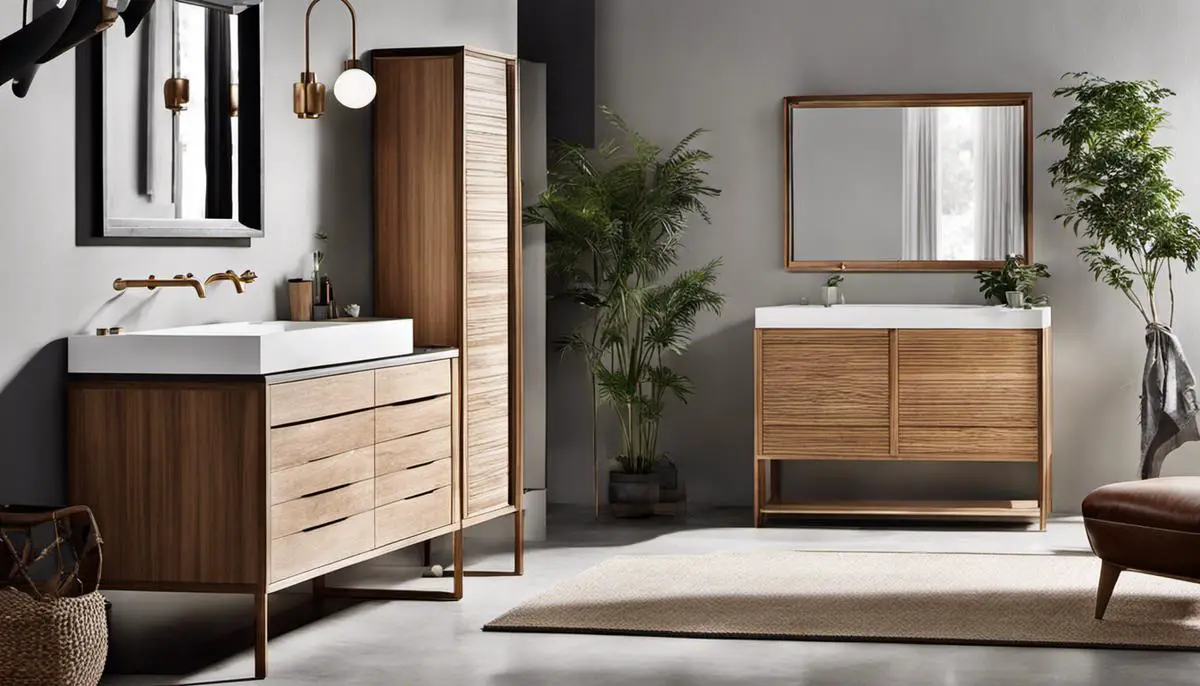
Through this comprehensive exploration, Scandinavian vanity stands out exceptionally as a design philosophy that is both, a visual testimony to the region’s inherent aesthetics and a reflection of its profound understanding of sustainability. It is an embodiment of function ushering in an era of responsible design that looks to the future. The confluence of simplicity, functionality, elegance, and eco-responsibility makes not only for a pleasing visual experience but also for a home that is in harmony with the environment. With high market appeal, innovative application in modern home styling, and iconic designers and pieces shaping its identity, this exploration offers profound insights into the fabulously diverse and enriching world of Scandinavian vanity.

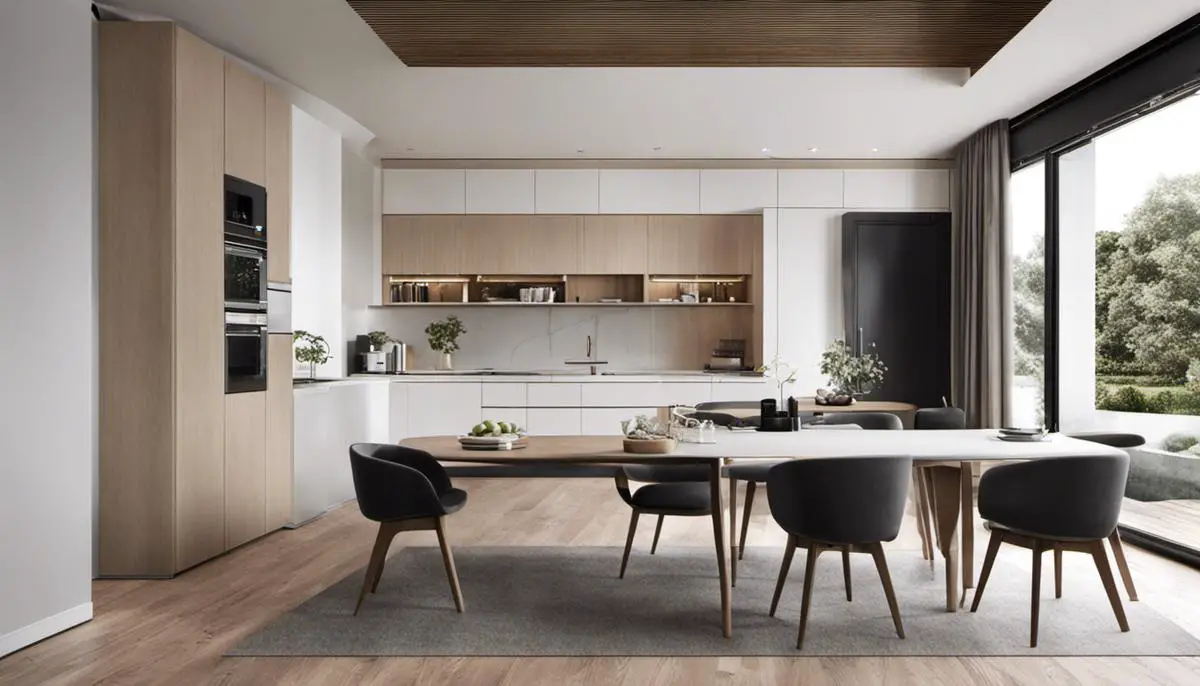
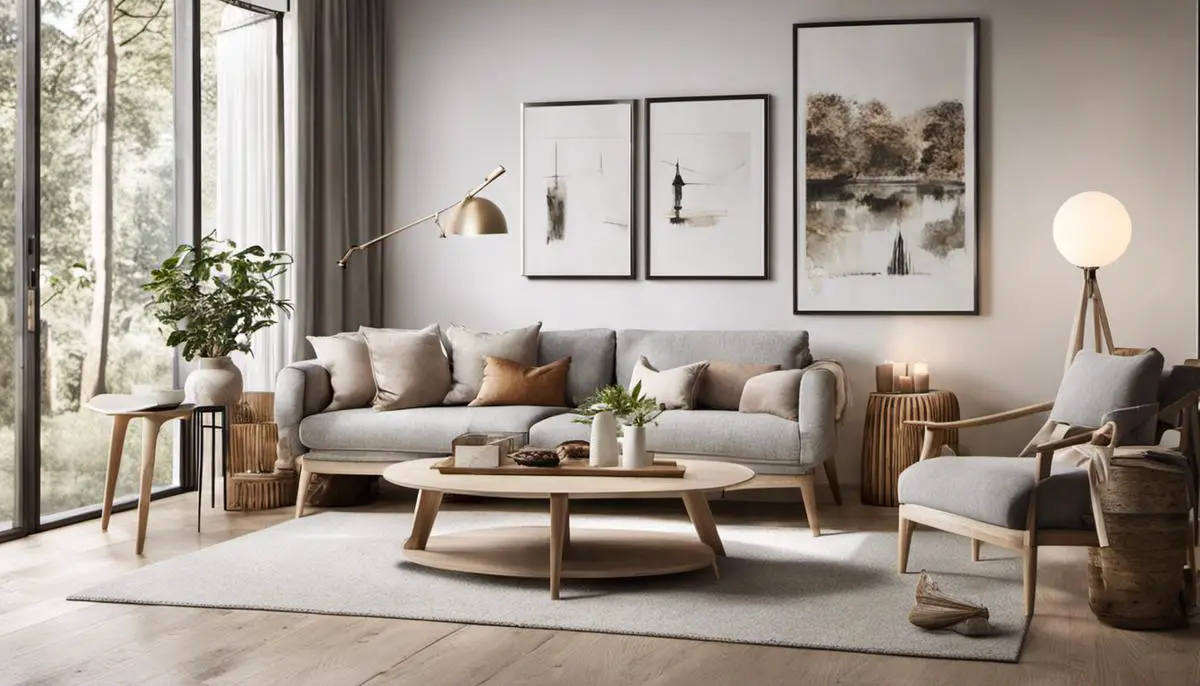
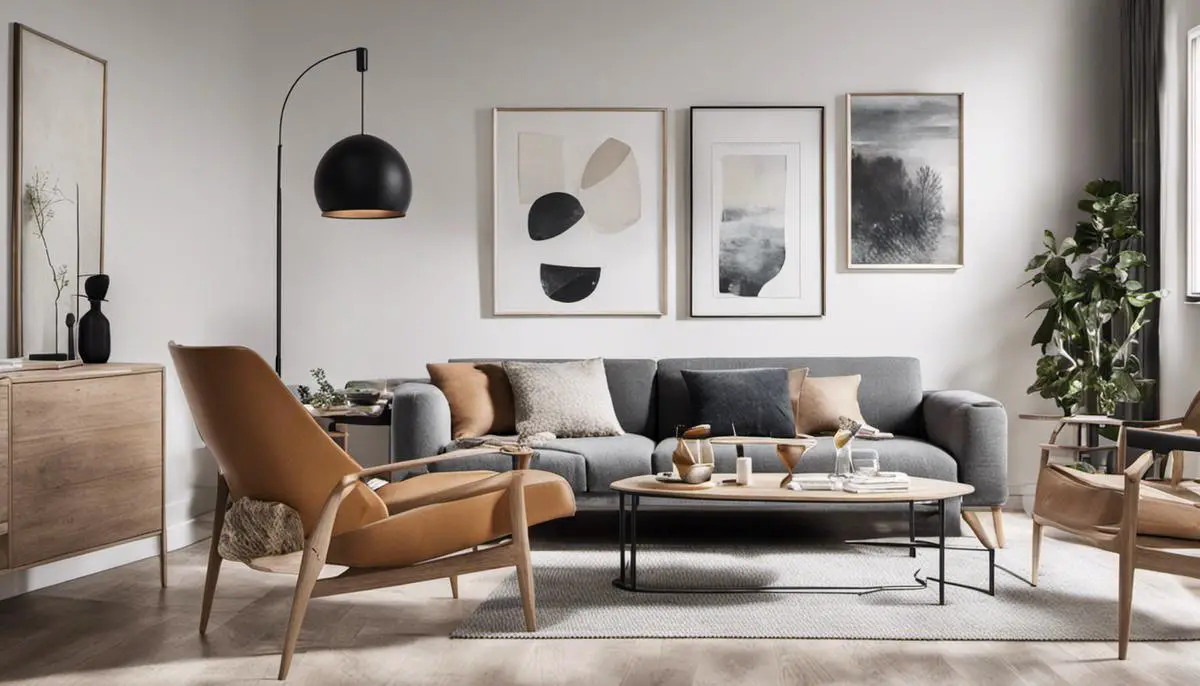
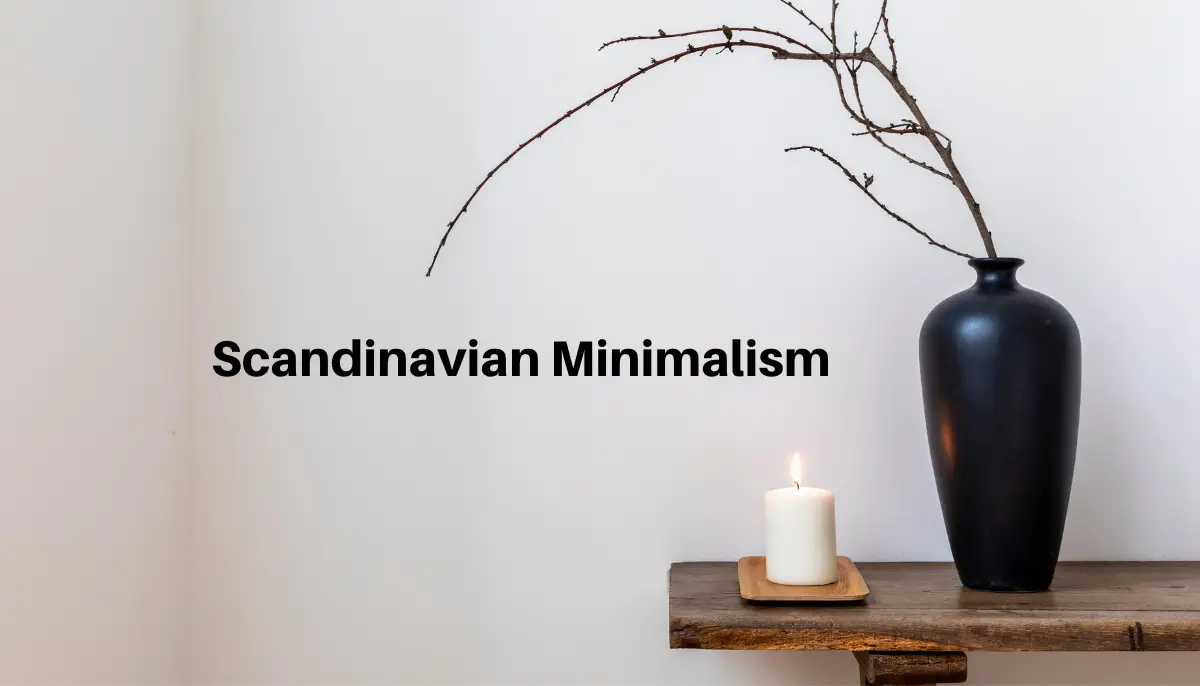
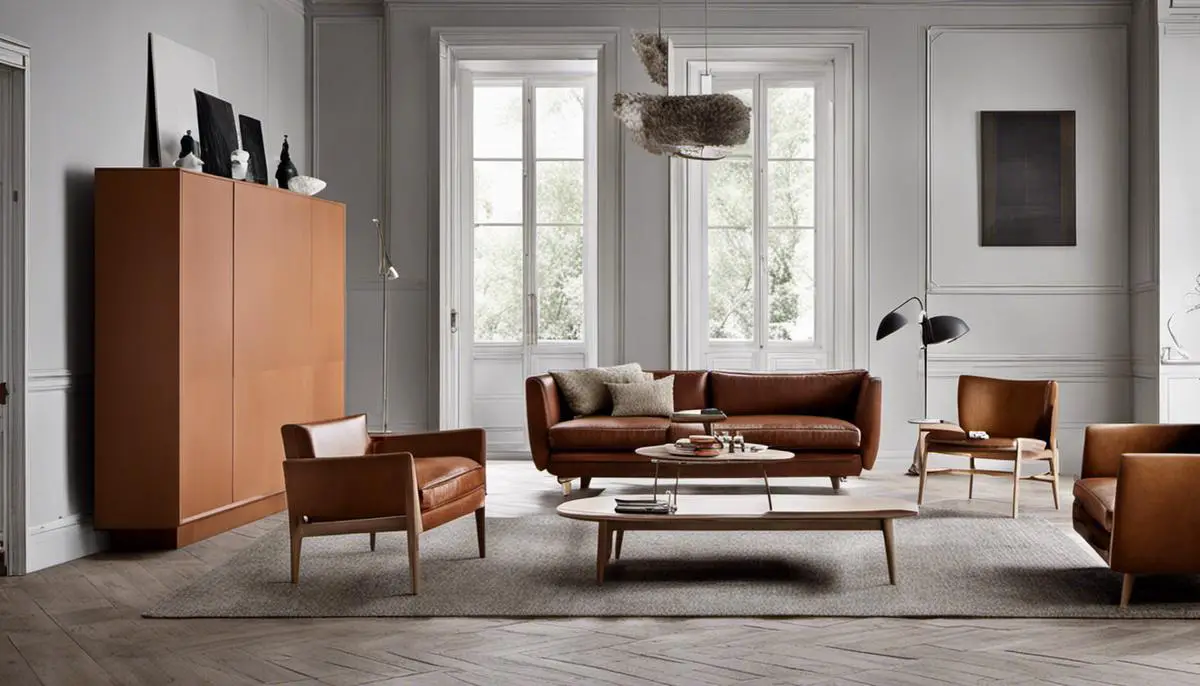
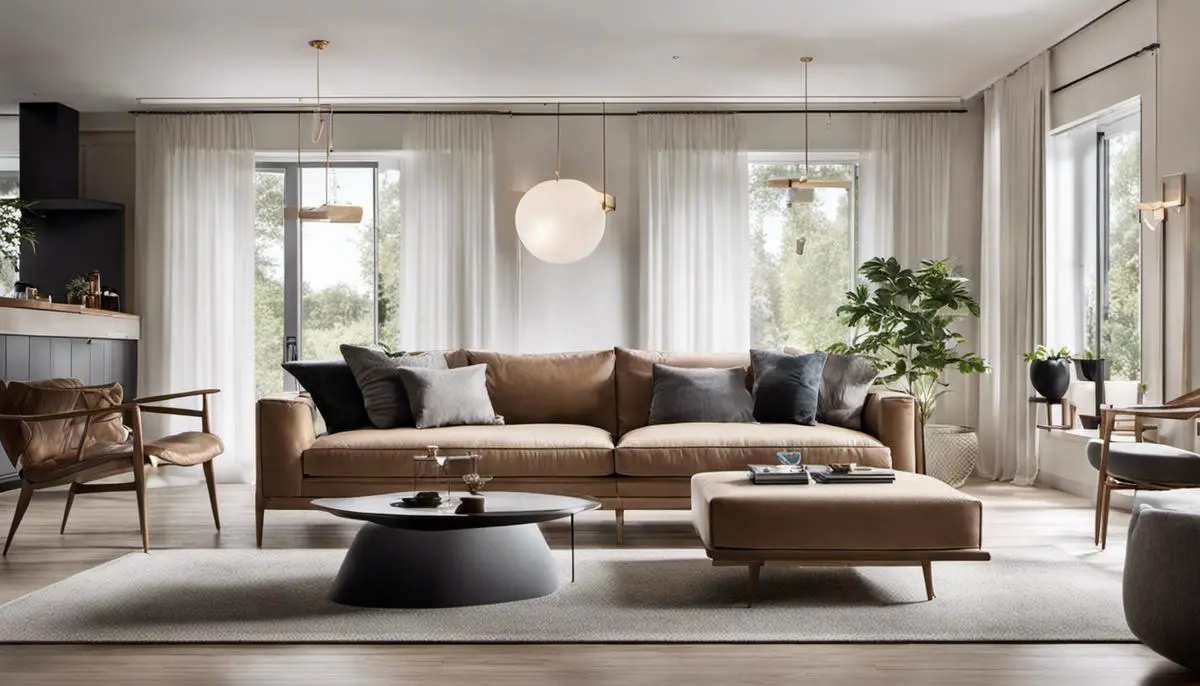


Leave a Reply